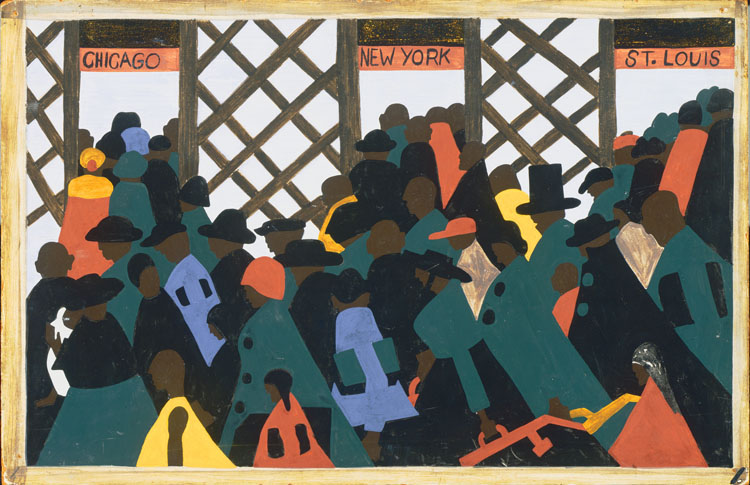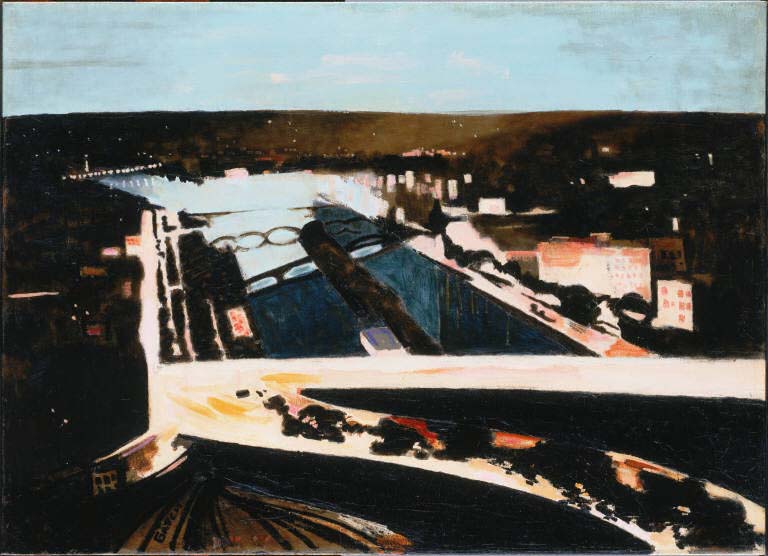
Jacob Lawrence, The Migration Series (1940-41) Panel no. 1 “During World War I there was a great migration north by southern African Americans.” Casein tempera on hardboard, 12 x 18 in. Acquired 1942. The Phillips Collection, Washington, DC
What song would you pair with Jacob Lawrence’s The Migration Series? As part of last year’s Vocal Colors, Wolf Trap Opera Company soprano Andrea Carroll chose Troubled Woman, part of a cycle called ‘Genius Child’ written by American composer Ricky Ian Gordon. Below is our newest audio tour stop: an excerpt from the performance, preceeded by an introduction by Lee Anne Myslewski, the Director of Artistic Administration for Wolf Trap Opera & Classical Programming. [jwplayer config=”Audio Player” mediaid=”19006″]
“This is the fifth year that Wolf Trap and The Phillips Collection have collaborated on Vocal Colors, a recital series that uses the thought-provoking works of The Phillips Collection as a springboard for a varied musical evening. Curated by musicians from the Wolf Trap Opera Company, the musical offerings cross genres and time periods, offering new aural perspectives on the respected visual works.”
This year, singers will be responding to works from Made in the USA. Hear from soprano Tracy Cox and tenor Robert Watson on June 19, and soprano Melinda Whittington and mezzo-soprano Carolyn Sproule on July 31.
On June 16 at 12 pm EST, Tracy Cox will lead our first-ever guest #breakforart Twitter chat! We’ll be discussing John Marin’s Pertaining to Fifth Avenue. Have questions about her process or song selection? Leave them as comments here, or join us on Twitter @PhillipsMuseum to participate.


